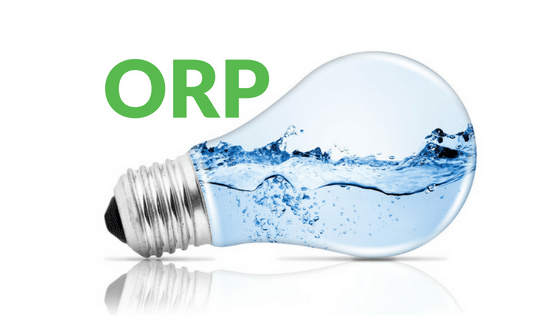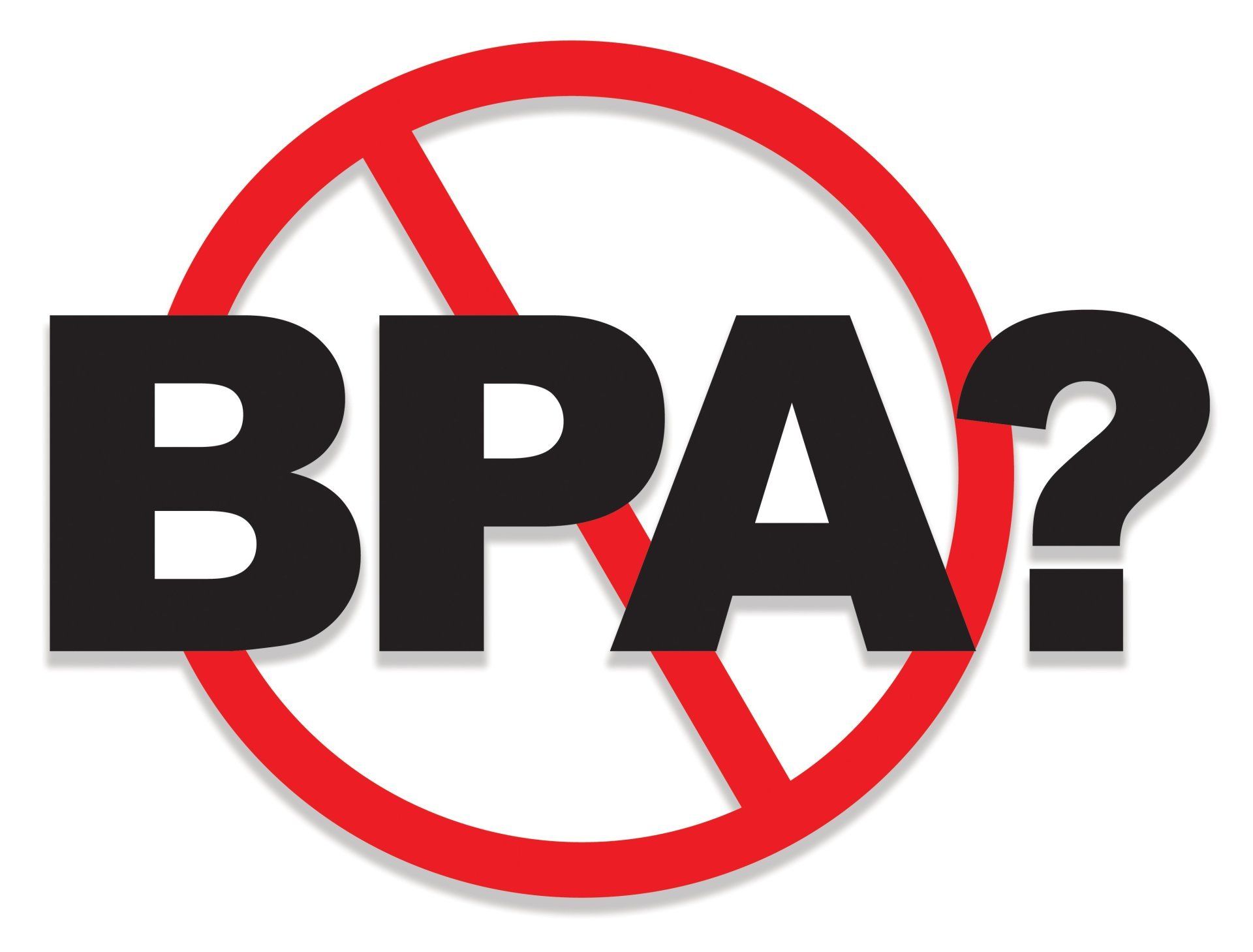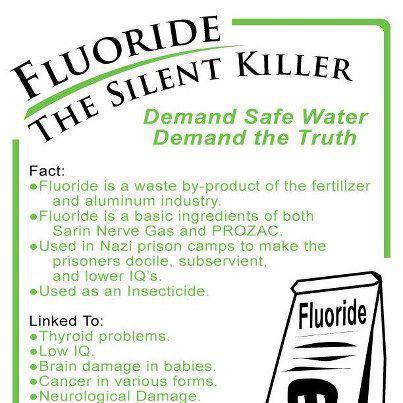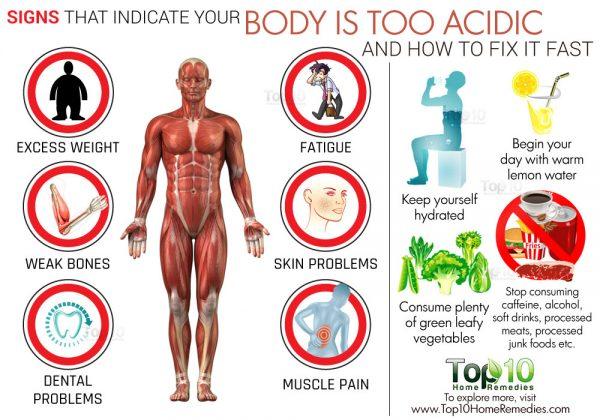BPA FREE!
- By Robert Staats
- •
- 13 Aug, 2017
- •
Why are our bottles 100% BPA FREE?!

In 2012 the U.S. Food and Drug Administration banned the sale of baby bottles that contain bisphenol A (BPA), a compound frequently found in plastics. The ban came after manufacturers’ responded to consumer concerns of BPA's safety after several studies found the chemical mimics estrogen and could harm brain and reproductive development in fetuses, infants and children.* Since then store shelves have been lined with BPA-free bottles for babies and adults alike. Yet, recent research reveals that a common BPA replacement, bisphenol S (BPS), may be just as harmful.
BPA is the starting material for making polycarbonate plastics. Any leftover BPA that is not consumed in the reaction used to make a plastic container can leach into its contents. From there it can enter the body. BPS was a favored replacement because it was thought to be more resistant to leaching. If people consumed less of the chemical, the idea went, it would not cause any or only minimal harm.
Yet BPS is getting out. Nearly 81 percent of Americans have detectable levels of BPS in their urine. And once it enters the body it can affect cells in ways that parallel BPA. A 2013 study by Cheryl Watson at The University of Texas Medical Branch at Galveston found that even picomolar concentrations (less than one part per trillion) of BPS can disrupt a cell’s normal functioning, which could potentially lead to metabolic disorders such as diabetes and obesity, asthma, birth defects or even cancer. “[Manufacturers] put ‘BPA-free’ on the label, which is true. The thing they neglected to tell you is that what they’ve substituted for BPA has not been tested for the same kinds of problems that BPA has been shown to cause. That’s a little bit sneaky,” Watson says.
A 2011 study
published in Environmental Health Perspectives
found that almost all of the 455 commercially available plastics that were tested leached estrogenic chemicals. This study lead to a bitter legal battle between Eastman Chemical Co. and the study’s author, George Bittner, professor of neurobiology at The University of Texas at Austin and founder of CertiChem and PlastiPure, two companies designed to test and discover nonestrogenic plastics.
Bittner claimed in the peer-reviewed report that Eastman’s product Tritan, marketed to be completely free of estrogenic leaching, showed such activity. Eastman claimed otherwise and filed a suit. A federal jury ruled in favor of the latter, saying Bittner’s testing methods were inadequate because the tests were done in vitro—in a petri dish rather than in vivo, in a live animal.
Since this episode, independent scientists have focused their efforts on in vivo testing. Deborah Kurrasch, from the University of Calgary, turned to zebra fish to study the effects of BPS on embryo development. Brain development in zebra fish is similar to that in humans but much easier to track. When the fish were dosed with BPS in similar concentrations to that found in a nearby river, neuronal growth exploded, rising 170 percent for fish exposed to BPA and a whopping 240 percent for those exposed to BPS. As the fish aged they began zipping around their tank much faster and more erratically than the unexposed fish. The researchers concluded that increased neural growth likely lead to hyperactivity. “Part of the problem with endocrine disruptors is they usually have a U-shaped dose response profile,” Kurrasch says. “At very low doses they have activity and then as you increase the dose it drops in activity. Then at higher doses it has activity again.” She found a very low dose—1,000-fold lower than the daily recommended amount for humans—can affect neural growth in zebra fish.
In another study, Hong-Sheng Wang, an associate professor at the University of Cincinnati, found that both BPA and BPS cause heart arrhythmia in rats. He tested almost 50 rats, giving them the chemicals in doses akin to concentrations found in humans. Even at such low concentrations the rats’ hearts began to race, but curiously only those of the females. They found that BPS blocked an estrogen receptor found only in female rats, which lead to the disruption of calcium channels—a common cause of heart arrhythmia in humans.
These in vivo studies agree with in vitro studies claiming that BPS is a hazard. But the problem doesn’t stop with removing bisphenol S from the market as was done for bisphenol A. The problem, according to Kurrasch, lies in the lack of industry regulation. Currently, no federal agency tests the toxicity of new materials before they are allowed on the market. “We’re paying a premium for a ‘safer’ product that isn’t even safer,” Kurrasch says. There are many types of bisphenols out there, so part of the public’s responsibility “is making sure [manufacturers] don’t just go from BPA to BPS to BPF or whatever the next one is.” -
| Author: |
Jenna Bilbrey |
| Publication: |
Scientific American |
| Publisher: |
Scientific American, a division of Nature America, Inc. |
| Date: |
Aug 11, 2014 |
*Clarification (8/12/14): This sentence was edited after posting to more precisely explain how the BPA ban came about.
Fecal Coliform and E coli
- are bacteria whose presence indicate that the water may be contaminated with human or animal wastes. Microbes in these wastes can cause short-term effects, such as diarrhea, cramps, nausea, headaches, or other symptoms.
Cryptosporidium - is a parasite that enters lakes and rivers through sewage and animal waste. This microbe has an outer shell that allows it to survive outside the body for long periods of time which makes it tolerant to many chlorine disinfectants. It causes cryptosporidiosis, a mild gastrointestinal disease. However, the disease can be severe or fatal for people with severely weakened immune systems. EPA and CDC have prepared advice for those with severely compromised immune systems who are concerned about Cryptosporidium.
Giardia Lamblia - is a parasite that enters lakes and rivers through sewage and animal waste. It causes gastrointestinal illness (e.g. diarrhea, vomiting, cramps). Giardia, like cryptosporidium, can survive long periods of time outside the body and is also difficult to treat with just basic chlorine disinfectants.
Coliform - bacteria are common in the environment and are generally not harmful. However, the presence of these bacteria in drinking water is usually a result of a problem with the treatment system or the pipes which distribute water. This indicates that the water may be contaminated with germs that can cause disease.
Turbidity - has no health effects. However, turbidity can interfere with disinfection because the particles can act as shields for viruses and bacteria and provide a medium for microbial growth. Turbidity may indicate the presence of disease causing organisms. These organisms include bacteria, viruses, and parasites that can cause symptoms such as nausea, cramps, diarrhea, and associated headaches.
Inorganic Contaminants
Arsenic - is a highly toxic heavy metal. Some people who drink water containing arsenic in excess of EPA's standard over many years could experience a wide range of serious problems. Health concerns include damage to the bladder, lungs, heart, kidney and liver. Arsenic can also harm the central & peripheral nervous system and circulatory system. Arsenic exposure has been linked to several types of cancers.
Fluoride - Many communities add fluoride to their drinking water to promote dental health. Each community makes its own decision about whether or not to add fluoride. EPA has set an enforceable drinking water standard for fluoride of 4 mg/L (some people who drink water containing fluoride in excess of this level over many years could get bone disease, including pain and tenderness of the bones). EPA has also set a secondary fluoride standard of 2 mg/L to protect against dental fluorosis.
Dental Fluorosis - in its moderate or severe forms, may result in a brown staining and/or pitting of the permanent teeth. This problem occurs only in developing teeth, before they erupt from the gums. Children under nine should not drink water that has more than 2 mg/L of fluoride.
Lead - typically leaches into water from plumbing in older buildings. Lead pipes and plumbing fittings have been banned since August 1998. Children and pregnant women are most susceptible to lead health risks. For advice on avoiding lead, see the how to remove lead in your drinking water fact sheet prepared by EPA.
Many water suppliers add a disinfectant to drinking water to kill germs such as giardia and e coli. Especially after heavy rainstorms, your water system may add more disinfectant to guarantee that these germs are killed.
Disinfectants
Chlorine - Some people who use drinking water containing chlorine in excess of EPA's standard could experience irritating effects to their eyes and nose as well as stomach discomfort.
Chloramines - are most commonly formed when chlorine and ammonia are added together to treat drinking water. Water that contains chloramines is usually safe as long as it meets EPA regulations. However, some people who are exposed to chloramines in excess of EPA's standard may experience irritating effects to their eyes, nose and stomach.
Chlorine Dioxide - is a water additive used to control taste and odor in water. Some infants and young children who drink water containing chlorine dioxide in excess of EPA's standard could experience nervous system effects as well as anemia. Similar effects may occur in fetuses of pregnant women who drink water containing chlorine dioxide in excess of EPA's standard.
Disinfection Byproducts - form when disinfectants added to drinking water to kill germs react with naturally-occuring organic matter in water.
Total Trihalomethanes - Some people who drink water containing trihalomethanes in excess of EPA's standard over many years may experience problems with their liver, kidneys, or central nervous systems, and may have an increased risk of getting cancer.
Haloacetic Acids - Some people who drink water containing haloacetic acids in excess of EPA's standard over many years may have an increased risk of getting cancer.
Bromate - Some people who drink water containing bromate in excess of EPA's standard over many years may have an increased risk of getting cancer.
Chlorite - Some infants and young children who drink water containing chlorite in excess of EPA's standard could experience nervous system effects as well as anemia. Similar effects may occur in fetuses of pregnant women who drink water containing chlorite in excess of EPA's standard.
Cryptosporidium - is a parasite that enters lakes and rivers through sewage and animal waste. This microbe has an outer shell that allows it to survive outside the body for long periods of time which makes it tolerant to many chlorine disinfectants. It causes cryptosporidiosis, a mild gastrointestinal disease. However, the disease can be severe or fatal for people with severely weakened immune systems. EPA and CDC have prepared advice for those with severely compromised immune systems who are concerned about Cryptosporidium.
Giardia Lamblia - is a parasite that enters lakes and rivers through sewage and animal waste. It causes gastrointestinal illness (e.g. diarrhea, vomiting, cramps). Giardia, like cryptosporidium, can survive long periods of time outside the body and is also difficult to treat with just basic chlorine disinfectants.
Coliform - bacteria are common in the environment and are generally not harmful. However, the presence of these bacteria in drinking water is usually a result of a problem with the treatment system or the pipes which distribute water. This indicates that the water may be contaminated with germs that can cause disease.
Turbidity - has no health effects. However, turbidity can interfere with disinfection because the particles can act as shields for viruses and bacteria and provide a medium for microbial growth. Turbidity may indicate the presence of disease causing organisms. These organisms include bacteria, viruses, and parasites that can cause symptoms such as nausea, cramps, diarrhea, and associated headaches.
Inorganic Contaminants
Arsenic - is a highly toxic heavy metal. Some people who drink water containing arsenic in excess of EPA's standard over many years could experience a wide range of serious problems. Health concerns include damage to the bladder, lungs, heart, kidney and liver. Arsenic can also harm the central & peripheral nervous system and circulatory system. Arsenic exposure has been linked to several types of cancers.
Fluoride - Many communities add fluoride to their drinking water to promote dental health. Each community makes its own decision about whether or not to add fluoride. EPA has set an enforceable drinking water standard for fluoride of 4 mg/L (some people who drink water containing fluoride in excess of this level over many years could get bone disease, including pain and tenderness of the bones). EPA has also set a secondary fluoride standard of 2 mg/L to protect against dental fluorosis.
Dental Fluorosis - in its moderate or severe forms, may result in a brown staining and/or pitting of the permanent teeth. This problem occurs only in developing teeth, before they erupt from the gums. Children under nine should not drink water that has more than 2 mg/L of fluoride.
Lead - typically leaches into water from plumbing in older buildings. Lead pipes and plumbing fittings have been banned since August 1998. Children and pregnant women are most susceptible to lead health risks. For advice on avoiding lead, see the how to remove lead in your drinking water fact sheet prepared by EPA.
Many water suppliers add a disinfectant to drinking water to kill germs such as giardia and e coli. Especially after heavy rainstorms, your water system may add more disinfectant to guarantee that these germs are killed.
Disinfectants
Chlorine - Some people who use drinking water containing chlorine in excess of EPA's standard could experience irritating effects to their eyes and nose as well as stomach discomfort.
Chloramines - are most commonly formed when chlorine and ammonia are added together to treat drinking water. Water that contains chloramines is usually safe as long as it meets EPA regulations. However, some people who are exposed to chloramines in excess of EPA's standard may experience irritating effects to their eyes, nose and stomach.
Chlorine Dioxide - is a water additive used to control taste and odor in water. Some infants and young children who drink water containing chlorine dioxide in excess of EPA's standard could experience nervous system effects as well as anemia. Similar effects may occur in fetuses of pregnant women who drink water containing chlorine dioxide in excess of EPA's standard.
Disinfection Byproducts - form when disinfectants added to drinking water to kill germs react with naturally-occuring organic matter in water.
Total Trihalomethanes - Some people who drink water containing trihalomethanes in excess of EPA's standard over many years may experience problems with their liver, kidneys, or central nervous systems, and may have an increased risk of getting cancer.
Haloacetic Acids - Some people who drink water containing haloacetic acids in excess of EPA's standard over many years may have an increased risk of getting cancer.
Bromate - Some people who drink water containing bromate in excess of EPA's standard over many years may have an increased risk of getting cancer.
Chlorite - Some infants and young children who drink water containing chlorite in excess of EPA's standard could experience nervous system effects as well as anemia. Similar effects may occur in fetuses of pregnant women who drink water containing chlorite in excess of EPA's standard.
Alkalinity Why Alkaline? Alkaline Q&A Acidity Self-Test
Proper Health starts with the correct acid-alkaline balance in your body. That’s why an Reverse Osmosis Alkaline Water filter system is so important. The pH level (acid - alkaline measurement) of our internal fluids affects every cell in our bodies. Extended acid imbalances of any kind can overwhelm your body, and lead to health complications.
Just as the body regulates its temperature in a rigid manner, so will it manage to preserve a very narrow pH range - especially in the blood. Alkaline water helps maintain a healthy pH. The body will go to such great lengths to maintain a blood pH of 7.365 that it will even create stress on other tissues, body systems, and organs to do so. Chronic acidity will interrupt all cellular activities and functions - it interferes with life itself.
When the pH of the body gets out of balance (too acidic), we may experience low energy, fatigue, excess weight, poor digestion, aches and pains, and even more serious disorders. Imagine being able to avoid all those discomforts by simply drinking Alkaline Water and having your Alkaline Water System in the convenience of your home.
The cycle of acidity begins primarily as a result of three things:
Ingesting acids. Eating too many acidifying foods like processed sugar, meats, dairy, coffee, alcohol, etc. Create an acid ash in the body. These acids can overload the body’s ability to neutralize them
Creation of acids. Pathogens and microforms create acidifying toxins in the body. As the body becomes more and more acidic, bad bacteria, yeasts and other microforms proliferate in the body. Since these organisms are living, they eat as well as create resulting toxins. These toxins are often very acidifying.
Improper elimination of acids. Not all acids are the same; some are weak and some are strong. Weak acids like citric acid are much easier to neutralize than strong acids like uric acid. The body uses many systems in order to buffer acids including breath, mineral reserves, and fat. When the body’s buffering systems become compromised, excess acids build up.
The process of reestablishing acid-alkaline balance begins with proper diet and nutrition. This includes eating alkalizing foods (vegetables, low sugar fruits, etc.), super hydration (drinking plenty of alkaline water that is ionic and structured), and proper supplementation.

WHAT IS ORP?
Oxidation Reduction Potential or Redox is the activity or strength of oxidizers and reducers in relation to their concentration. Oxidizers accept electrons, reducers lose electrons. Examples of oxidizers are: chlorine, hydrogen peroxide, bromine, ozone, and chlorine dioxide. Examples of reducers are sodium sulfite, sodium bisulfate and hydrogen sulfide. Like acidity and alkalinity, the increase of one is at the expense of the other.
ORP stands for Oxidation-Reduction Potential. In practical terms, it is a measurement to oxidize contaminants. It's as simple as that. ORP is the only practical method we have to electronically monitor sanitizer effectiveness

There are many dangerous effects of oxidation- (the theft of an electron ) on the body's organs:
There are many dangerous effects of oxidation( the theft of an electron ) on the body's organs:
* Oxidation of the liver can lead to hepatitis, cirrhosis and cancer* Oxidation of the pancreas can lead to pancreatitis, diabetes and cancer* Oxidation of the kidney can lead to nephritis, nephrosis and cancer
Don't panic just yet! There is a way to protect your body's healthy tissue from oxidation caused by these free radicals, it’s called Alkaline Water. You must simply provide free electrons to the active oxygen radicals. This will neutralize their high oxidation potential and keep your healthy tissue safe from oxidation. All this will happen once you incorporate higher ph water like Alkaline Water into your diet.







